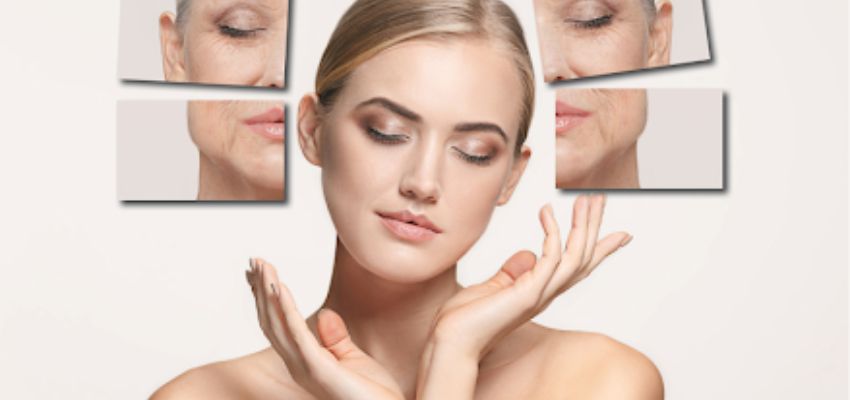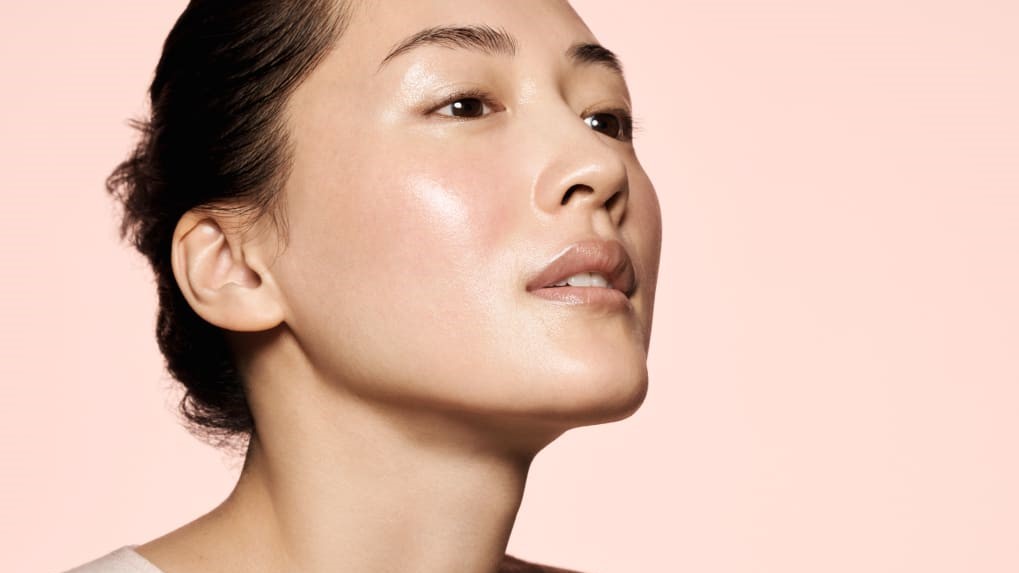Light emitting diode (LED) light therapy has recently received increased attention as a novel, non-invasive treatment to promote anti-aging effects, employed both by professional aestheticians in clinics and non-professional individuals at homes. While it is possible to apply LED lights on various areas of the body, LED technology is most commonly employed in the treatment of face damage caused by harmful sun rays and other elements. “Red Light Therapy is a clinically studied, FDA-approved treatment that can improve the appearance of skin if you have acne, scars, wrinkles, and other visible signs of aging,” says LA-based licensed esthetician Shane Miller.
Many questions surround the use of RLT for skin rejuvenation and repair, including the mechanism by which this revolutionary technology, how it can generate anti-aging effects without using ultraviolet (UV) light, who can receive the treatment safely and who should steer clear of it, potential side effects, and the time it takes for treated patients to start seeing results. In this guide, we will tackle each one of these questions, covering everything you need to know about RLT before undergoing the procedure.
From Ancient Egypt to NASA Laps: The Evolution of Red Light Therapy
Low-level laser (light) therapy, previously abbreviated as LLLT, was first discovered in 1967 by Endre Mester at the Semmelweis Medical University in Hungary when repeated scientific experiments with red lasers resulted in hair growth and wound healing in rats. Light treatment was employed in both the medical and physiotherapy fields throughout history, with roots in ancient Egypt, Greece, and India. Florence Nightingale started the modern renaissance in light therapy in the 1850s, advocating the improvement of human health through the abundance of sunlight and clean air. Phototherapy has been used in the medical field since 1903 in America, Australia, and Scandinavia. The success of this technology was more evident to the world in the late 19th century when Niels Finsen received the Nobel Prize for Medicine for treating tuberculosis scarring with UV light and smallpox scarring with red light. Later, NASA started doing experiments on plant growth in space using the RLT technology and then to aid in the healing of wounds in astronauts. As a result. other potential uses of red light therapy for skin rejuvenation have started to gain attention, with its efficacy and safety being supported by a few studies. Now, there are other names that are used to describe RLT, including low-level laser light therapy. non-thermal LED light, low-power laser therapy, cold laser therapy, soft laser therapy, photonic stimulation, biostimulation, photobiomodulation, and phototherapy.
Red Light Helps Cells ‘Communicate’: The Science Behind RLT
Essentially, LED light therapy is based on the use of different wavelengths, which correspond to distinct colors that penetrate the skin differently. Among these visible colors is the color red, which is, according to the National Center for Atmospheric Research., has wavelengths of around 620 to 750 nm. Red light therapy (RLT) is thus the application of low-wavelength red light to the skin in order to improve the overall appearance of the treated area. The purpose of the procedure is to stimulate the tissue recovery process and other forms of rejuvenation in the skin with no surgical intervention and without the risk of thermal injuries. Photobiomodulation (PBM) is the phenomenon that RLT is based on. Photobiomodulation can be also defined as the absorption of red light energy, enhancing cell signaling, mitochondrial ATP production, and growth factor synthesis. "This is where different components of our cells are activated or respond to different wavelengths of light," board-certified dermatologist Erum Ilyas, M.D., MBE, FAAD, explains. "Studies seem to show that light acts on the mitochondria of cells, which leads to increased production of different factors that increase the proteins and factors that allow cells to communicate.” As a result of the skin cells absorbing light and “communicating” more effectively, Ilyas says that "this may help stimulate collagen production and other factors that help with skin remodeling,"
Treatment Put to the Test: Is Red Light Therapy Effective?
While the effectiveness of RLT for skin rejuvenation is still a topic of discussion, some studies show promising results of its use in the aesthetic field. “Right now in the United States, red light therapy is still considered non-mainstream science. But there are growing academic and clinical centers adopting the technology and making it available to patients,” says Praveen R. Arany, PhD, DDS, an associate professor at the University of Buffalo and the interim director of the Center of Excellence for Photobiomodulation at Shepherd University in Shepherdstown, West Virginia.
Scientific evidence exists to support the role of RLT in skin rejuvenation and treating acne. One study aimed to investigate how red LED light therapy can be beneficial for skin rejuvenation and repair tested the technology on several subjects aged between 27 and 79 years. One figure included in the study showed “before and after” pictures of the forehead of a 41-year-old woman. The area, that was subjected to the RLT, had visibly fewer fine lines in the “after” picture. Other treated subjects experienced a significant improvement in collagen density, skin complexion, and skin feeling. Fibroblasts are the cells in human skin that red LED light acts on. These cells have a role in producing collagen matrix and have cell surface receptors, known as integrins, which particularly attach to proteins in the matrix that include type I collagen. So, theoretically speaking, RLT could aid in reversing signs related to photoaging in the skin. “Red light therapy (RLT) involves exposing the skin to safe wavelengths of light in order to address a number of skin concerns, including signs of aging, stretch marks, scars, hyperpigmentation, and acne,” explains Dr. Dendy Engelman, MD, FACMS, FAAD, a board-certified cosmetic dermatologist at Shafer Clinic, NYC. “Low wavelength red light produces a biochemical effect in cells to make more energy, which in turn helps cells work more efficiently to rejuvenate and repair damage.”
In addition to skin rejuvenation, RLT might also be used to treat common skin conditions; it is sometimes promoted as a treatment for wounds, scars, age spots, stretch marks, rosacea, psoriasis, eczema, and acne.
Safety Concerns: An FDA-Approved Treatment Can Be Dangerous
In contrast to ultraviolet (UV) light that has the risk of causing cancer, red light therapy does not use this type of light. Some forms of traditional laser are absorbed at a relatively faster pace through the skin and may lead to serious injury and adverse outcomes. Intense pulsed light (IPL), for instance, can cause permanent scarring, burns, darkening or lightening of the skin, eye damage, infection, or blistering when incorrectly performed. On the other hand, red light therapy is based on the use of low-level wavelengths light that is only absorbed by the epidermis (the top layer of skin) and then travels deeper into the dermis. “LED treatment with red and near-infrared is, in contrast to other modalities doesn’t generate heat in the skin, so it has a lower risk of adverse side effects like hyperpigmentation for example. So it’s pretty safe,” says Dr. Andrea Suarez , a board-certified dermatologist based in Houston, Texas. According to Cleveland Clinic, RLT seems to be safe and is not linked to any side effects experienced by treated patients, at least in the short term.
Although experts believe that the RLT is safe, it is not a treatment that everyone can receive. For example, people with photosensitive diseases like lupus or polymorphous light eruption, or those who are taking medication that makes them sensitive to light should not receive the red light treatment. Additionally, Dr. Debra Jaliman M.D., a board-certified dermatologist based in New York and author of the book, Skin Rules: Trade Secrets from a Top New York Dermatologist, says that since the effects of RLT on pregnant women haven’t been well studied yet, it is not recommended for them to undergo the non-invasive procedure until scientific evidence of the therapy’s safety on pregnant women exists.
Realistic Expectations: The Time it Takes To See Results
The question of how long it takes for RLT to work may be the first one that crosses the minds of patients. However, the answer mainly depends on the expectations of each one. Are they looking to reduce redness and acne? Or do they seek to benefit from the anti-aging effects of the treatment, such as de-wrinkling sagging skin? Also, not everyone will respond the same way to red light therapy, making it challenging to know for a fact when the patient will start seeing results. “Have realistic expectations, knowing that [red light therapy] might have great results for you and it also might not,” says Dr. Apple Bodemer, a board-certified dermatologist and associate professor at the University of Wisconsin School of Medicine and Public Health. In general, most patients should start seeing improvements in four to six weeks with consistent use. Patients should also keep in mind that the results will not be dramatic and will take even longer for wrinkle reduction. Patients are thus recommended to take "before and after" pictures to help them notice how their skin improves with each RLT session.
References:
Fisher GJ, Varani J, Voorhees JJ. Looking older: fibroblast collapse and therapeutic implications. Arch Dermatol. 2008 May;144(5):666-72. doi: 10.1001/archderm.144.5.666. PMID: 18490597; PMCID: PMC2887041.
Glass GE. Photobiomodulation: The Clinical Applications of Low-Level Light Therapy. Aesthet Surg J. 2021 May 18;41(6):723-738. doi: 10.1093/asj/sjab025. Erratum in: Aesthet Surg J. 2022 Apr 12;42(5):566. PMID: 33471046.
Hamblin MR. Photobiomodulation or low-level laser therapy. J Biophotonics. 2016 Dec;9(11-12):1122-1124. doi: 10.1002/jbio.201670113. PMID: 27973730; PMCID: PMC5215795.
Liebert A, Kiat H. The history of light therapy in hospital physiotherapy and medicine with emphasis on Australia: Evolution into novel areas of practice. Physiother Theory Pract. 2021 Mar;37(3):389-400. doi: 10.1080/09593985.2021.1887060. Epub 2021 Mar 7. PMID: 33678141.
Wunsch A, Matuschka K. A controlled trial to determine the efficacy of red and near-infrared light treatment in patient satisfaction, reduction of fine lines, wrinkles, skin roughness, and intradermal collagen density increase. Photomed Laser Surg. 2014 Feb;32(2):93-100. doi: 10.1089/pho.2013.3616. Epub 2013 Nov 28. PMID: 24286286; PMCID: PMC3926176.









Leave a comment
All comments are moderated before being published.
This site is protected by hCaptcha and the hCaptcha Privacy Policy and Terms of Service apply.